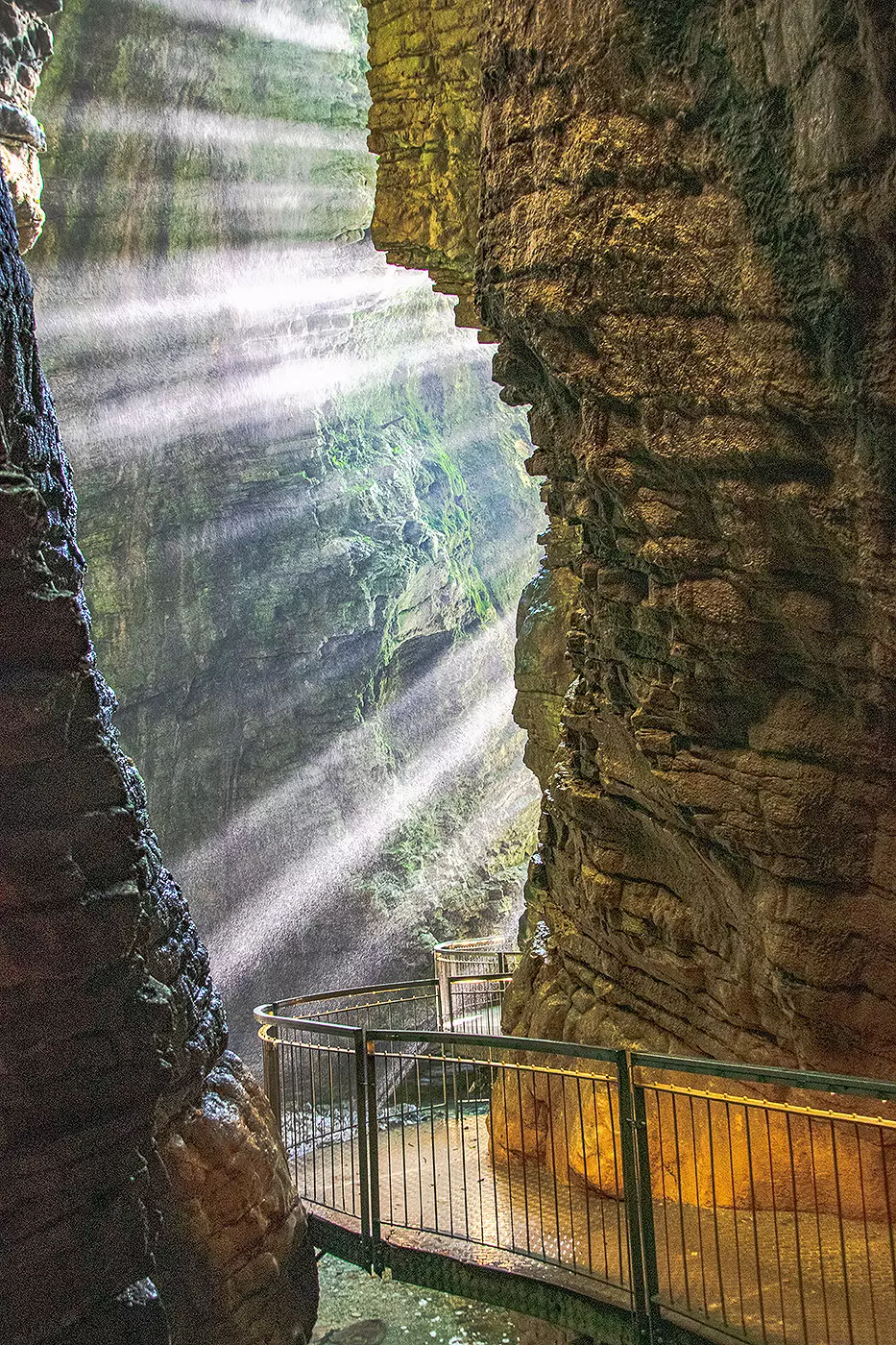
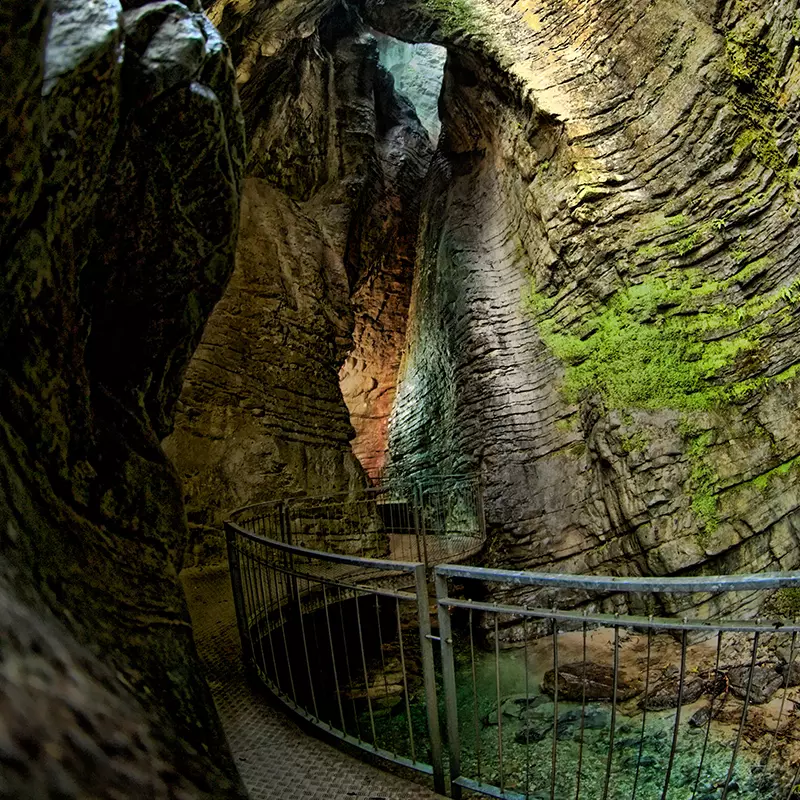
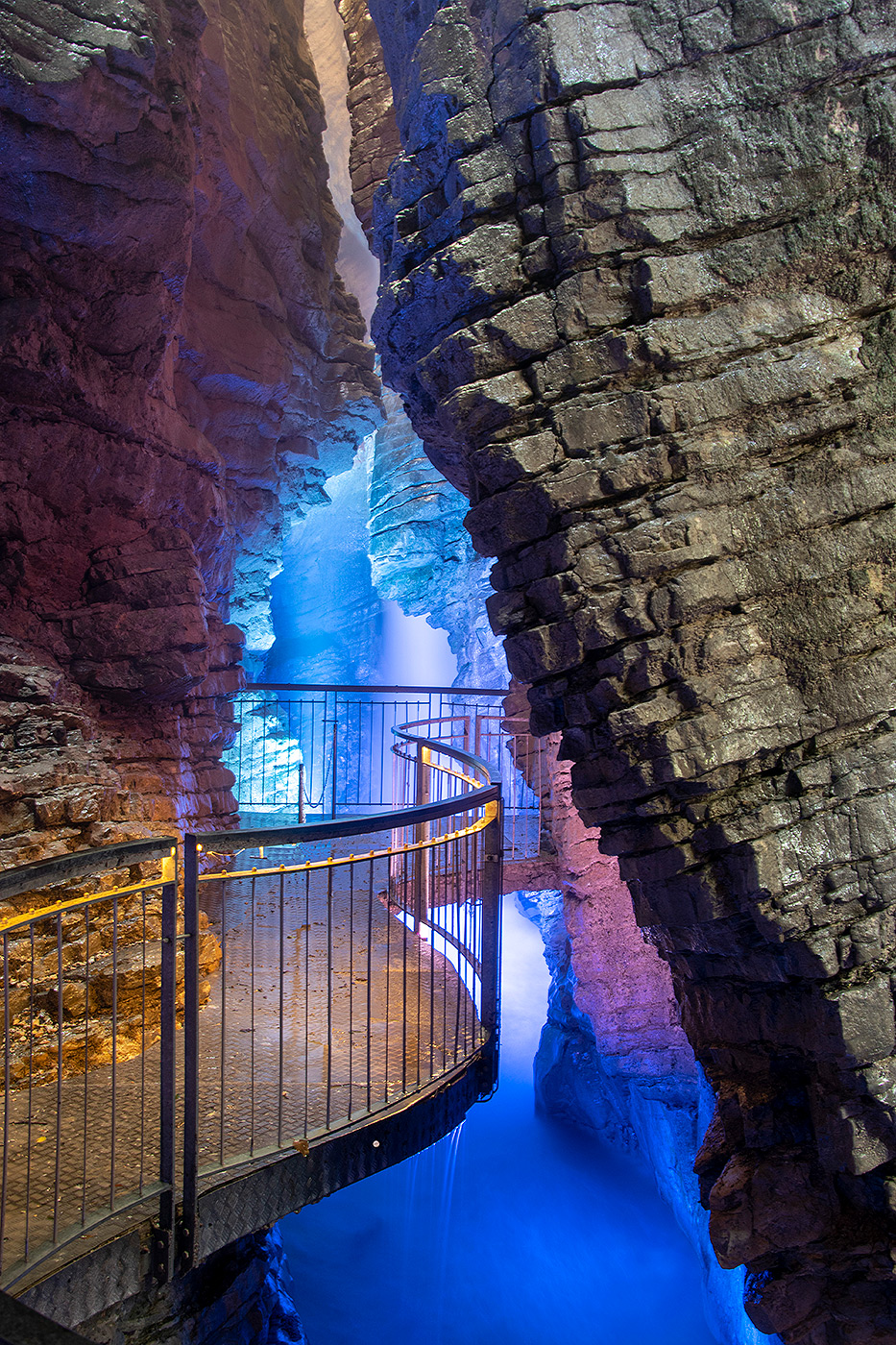
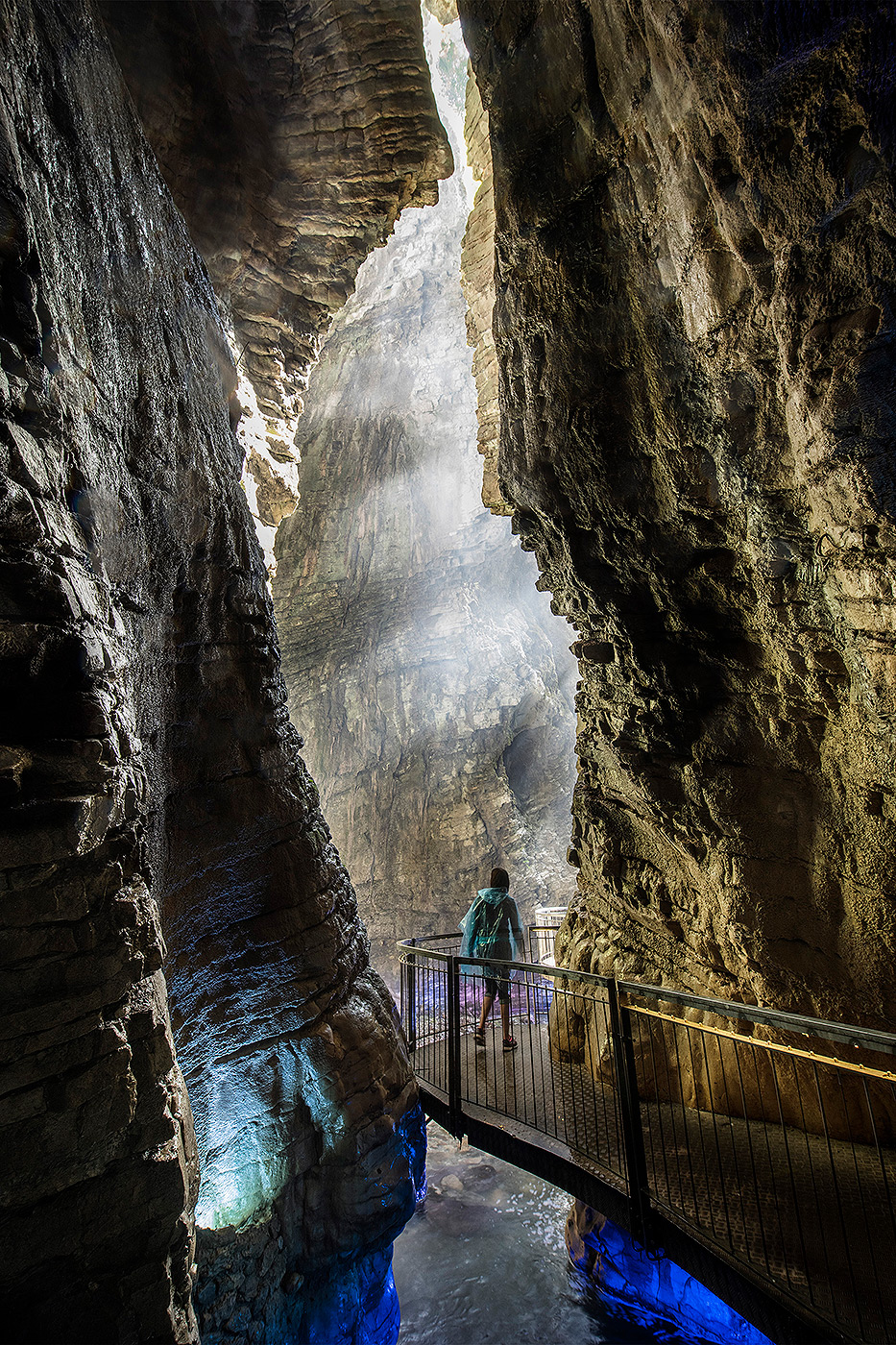
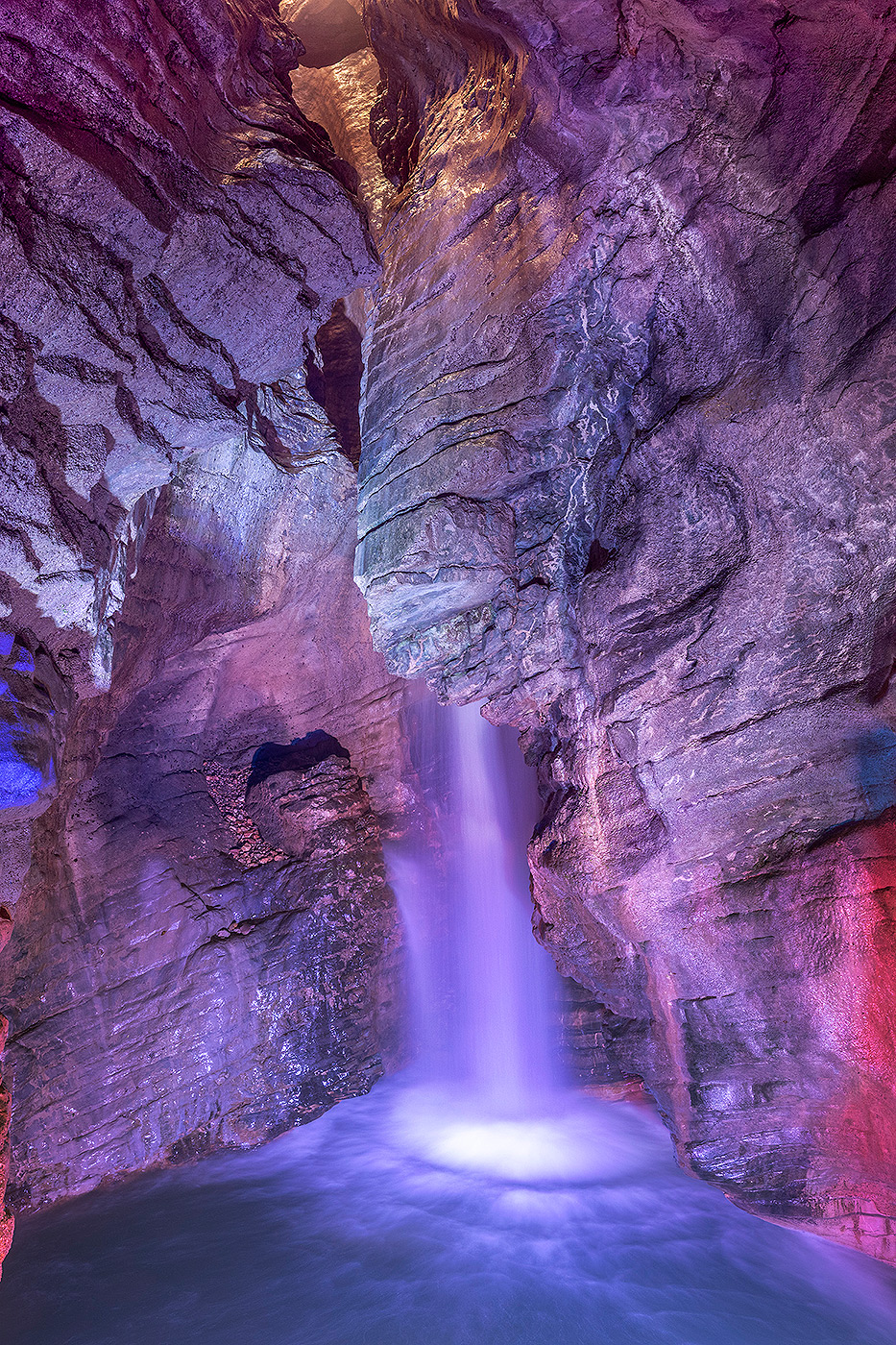
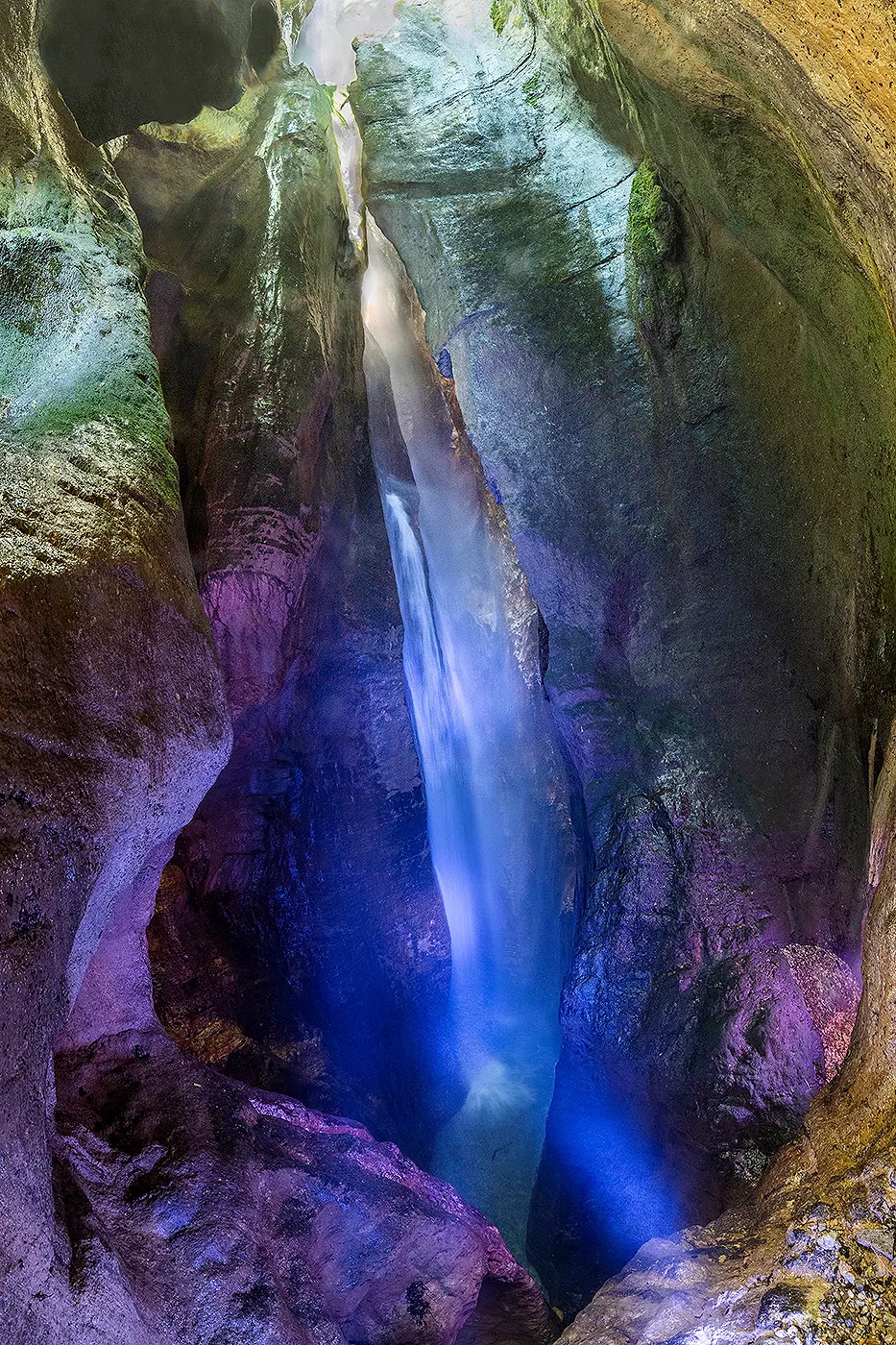
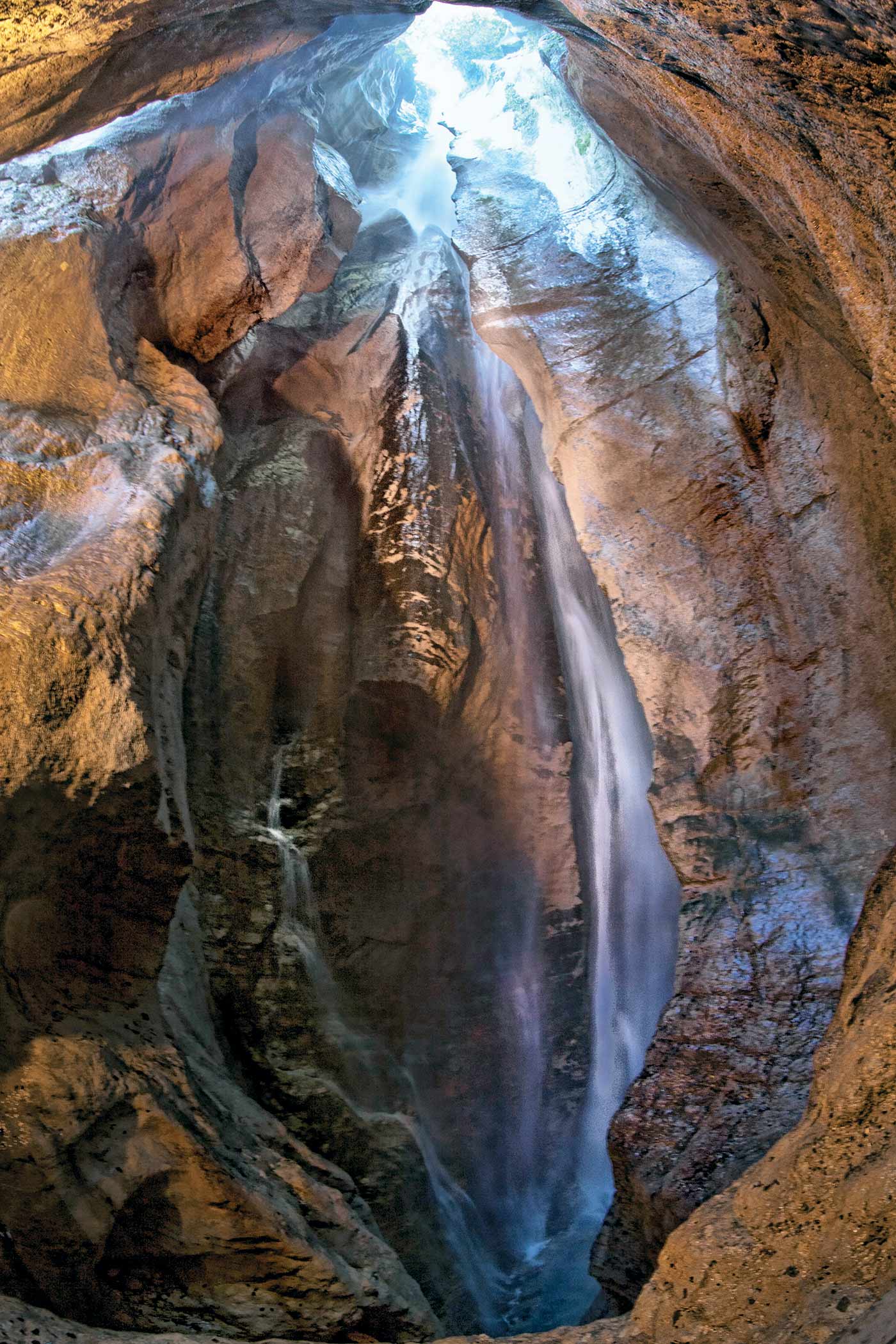
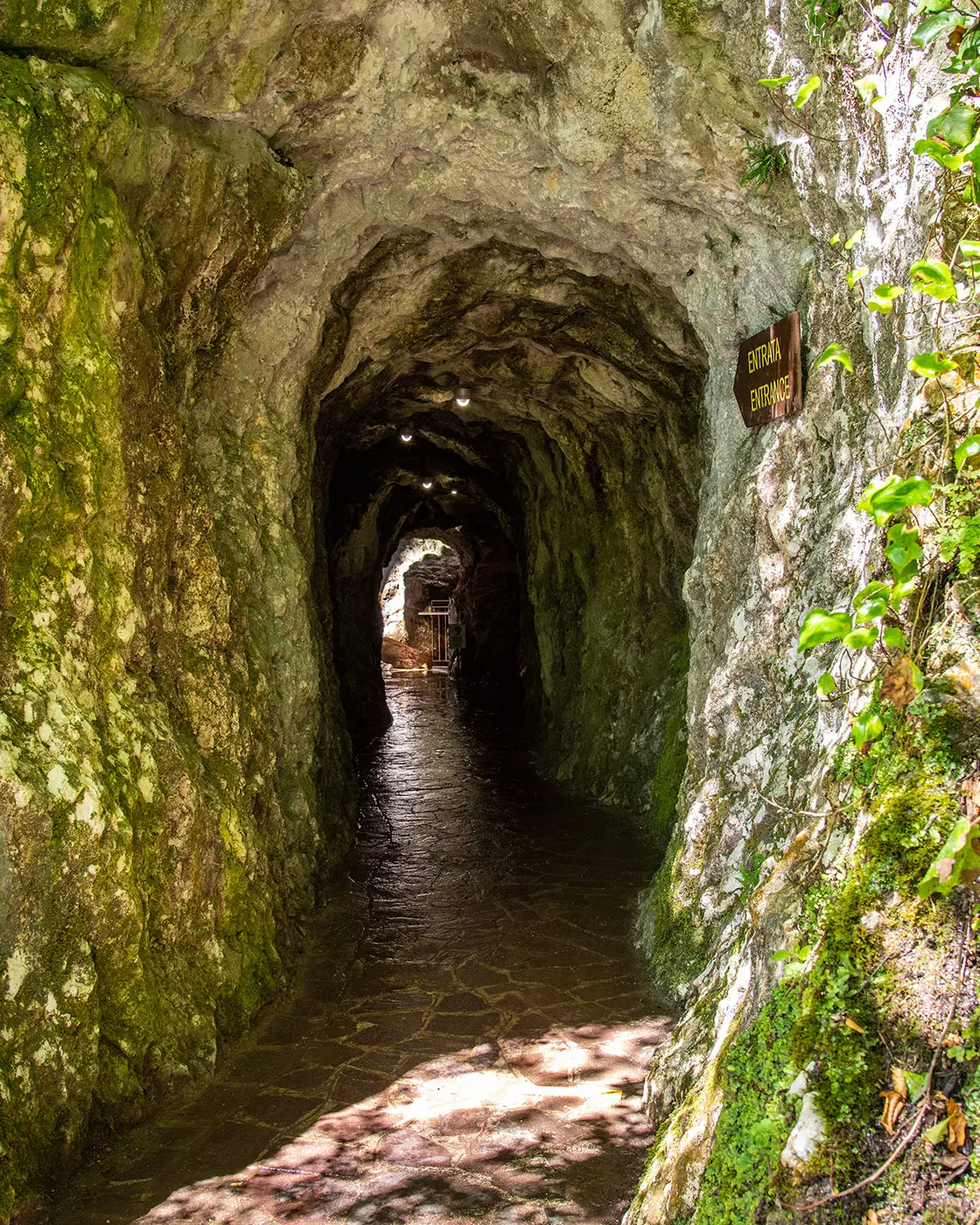
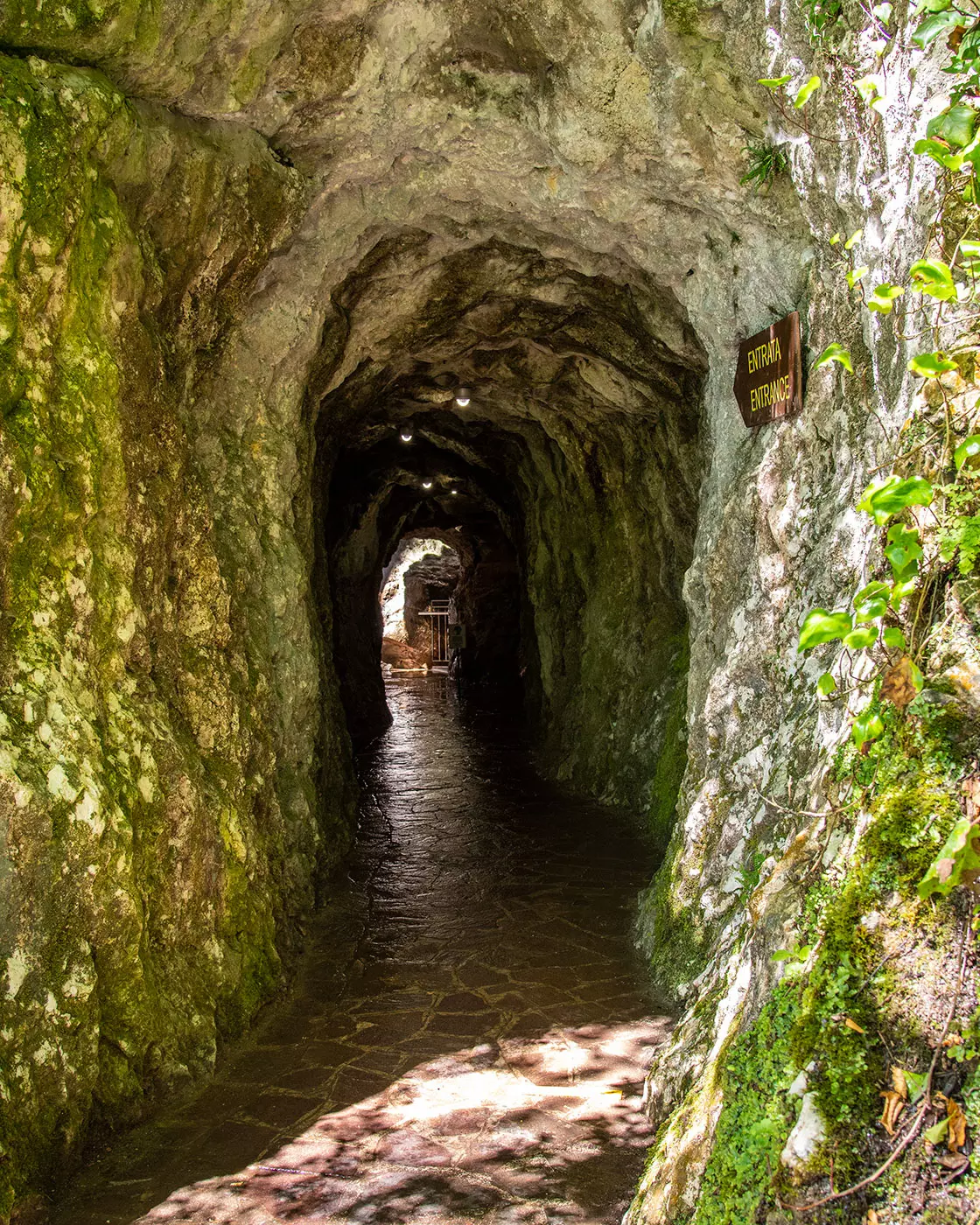
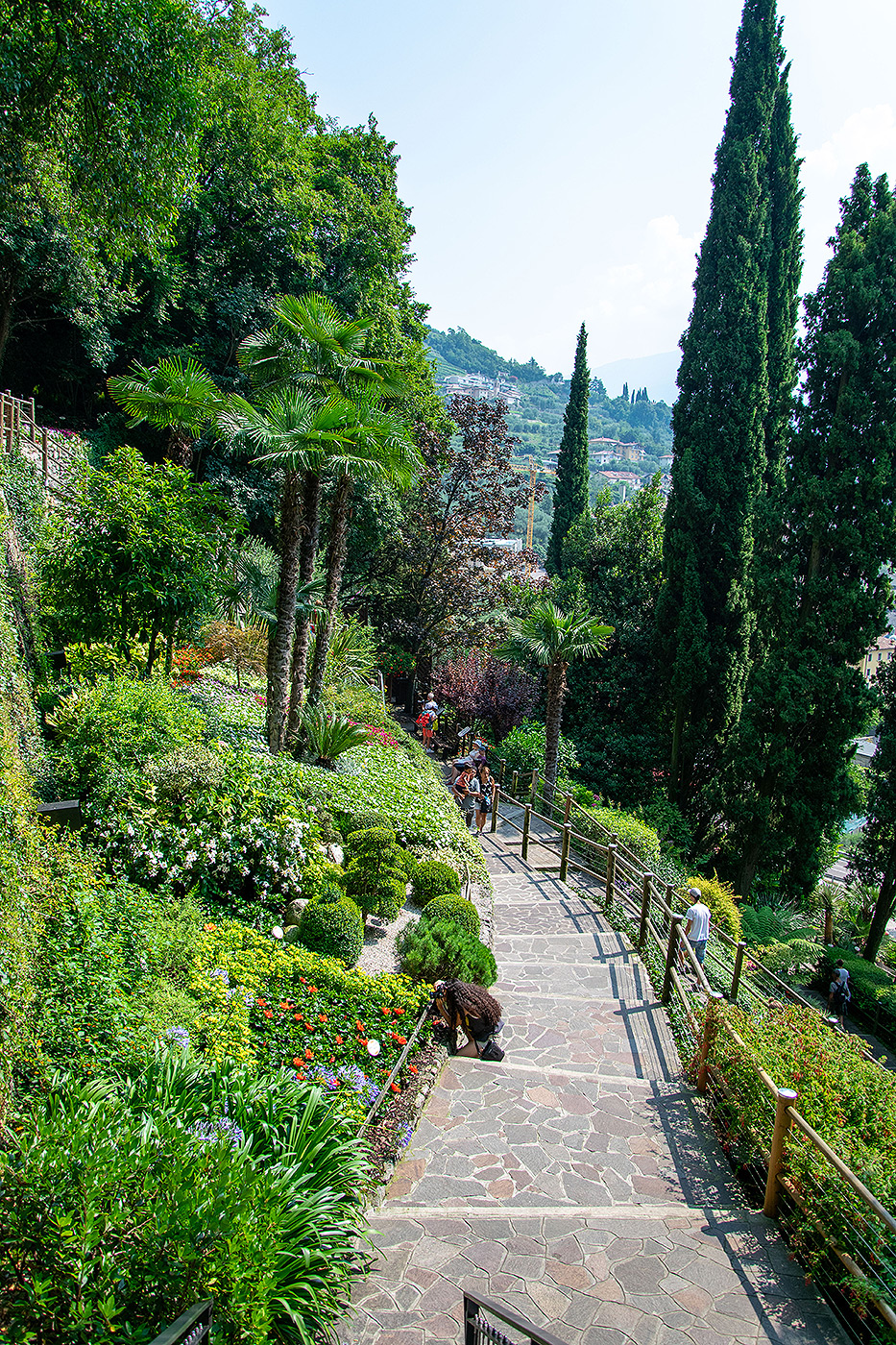
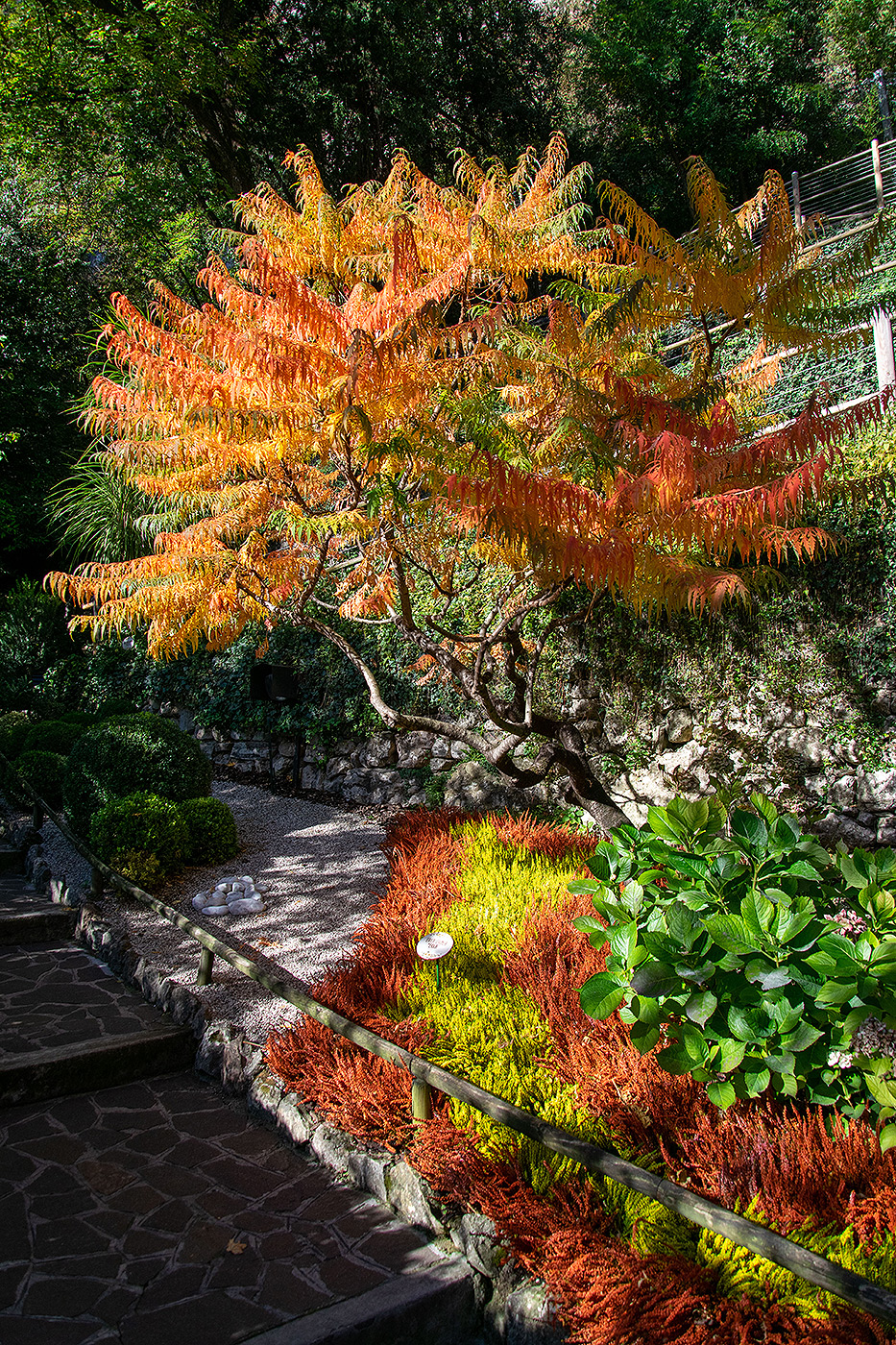
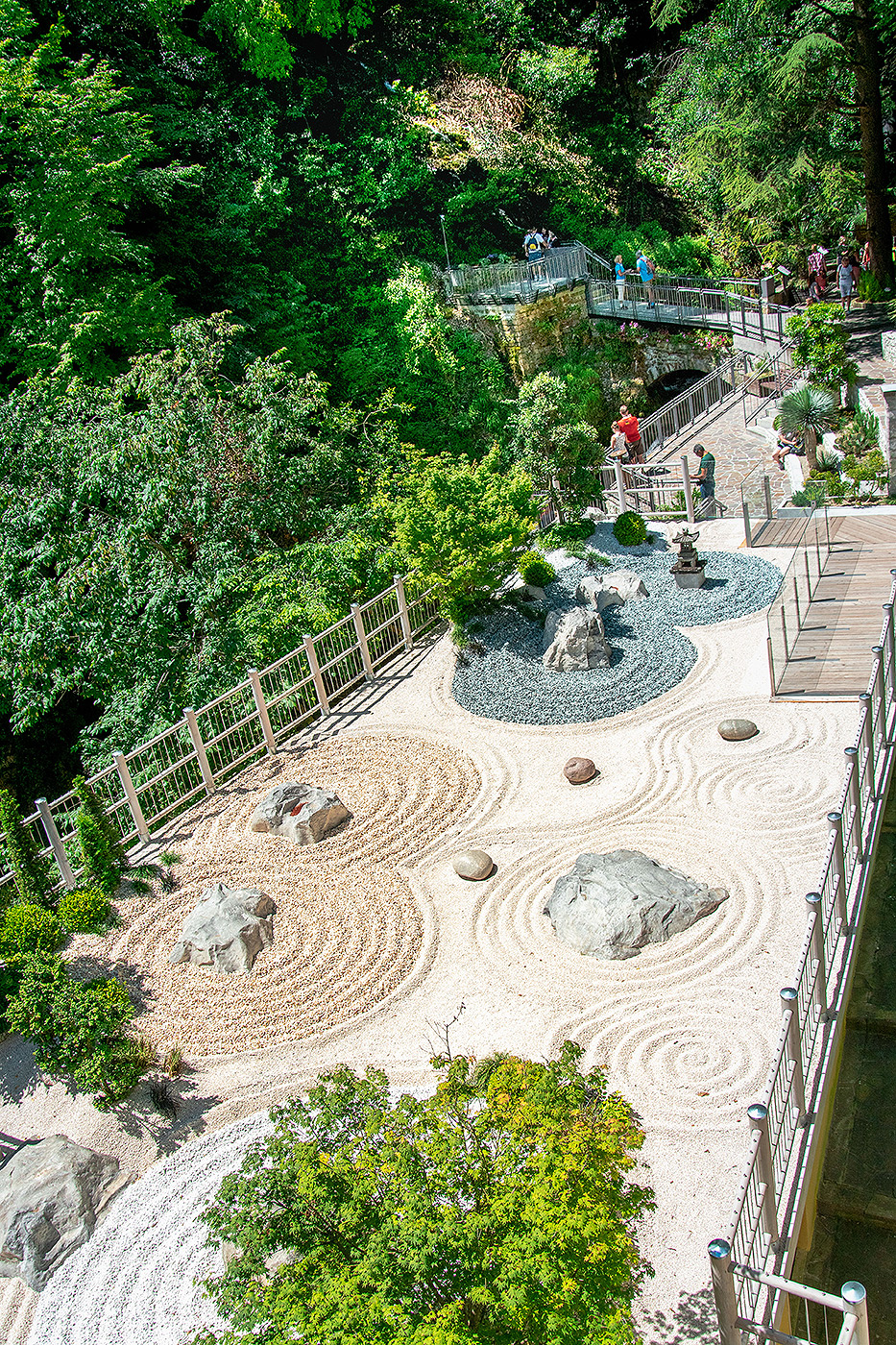
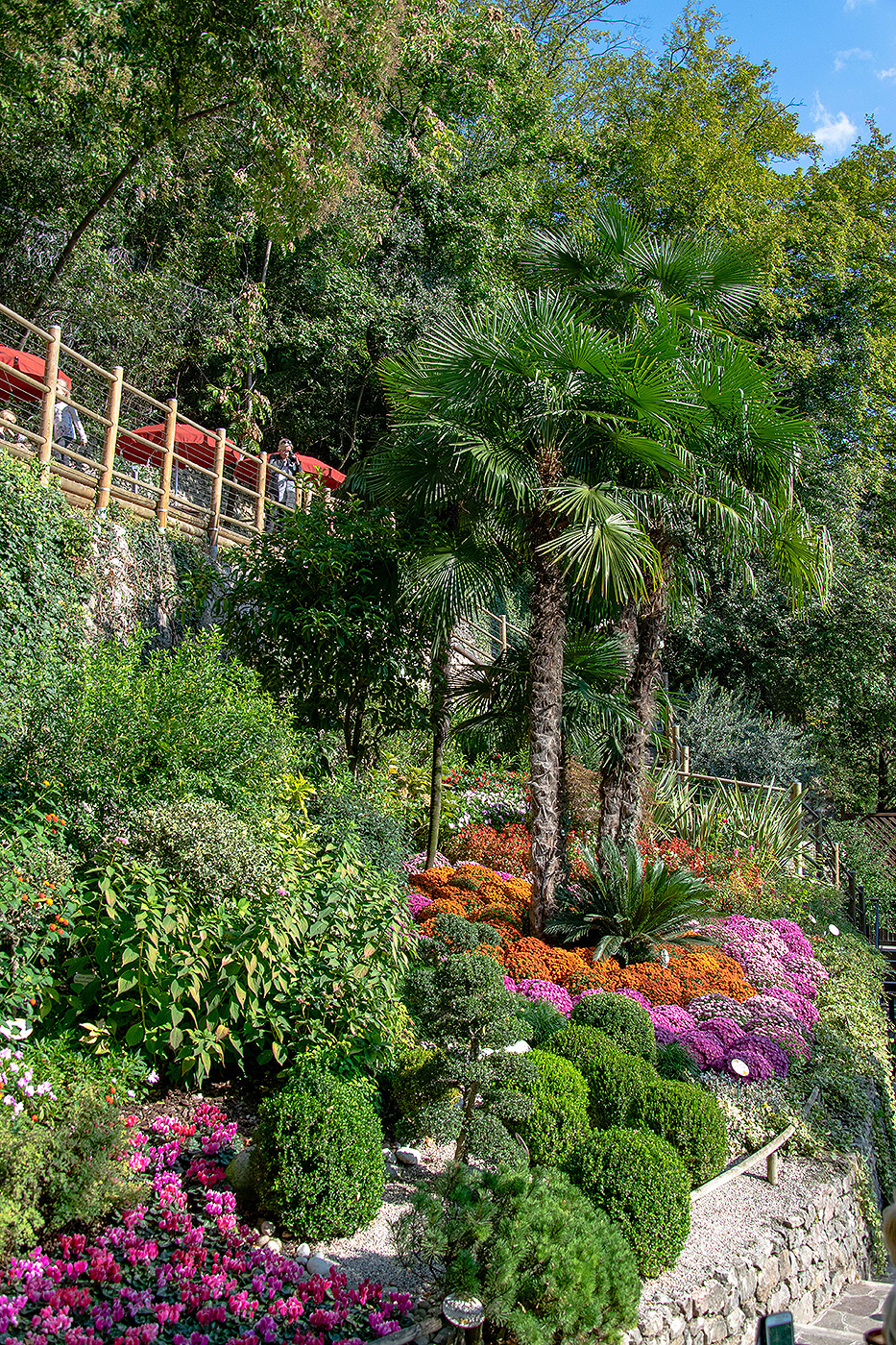
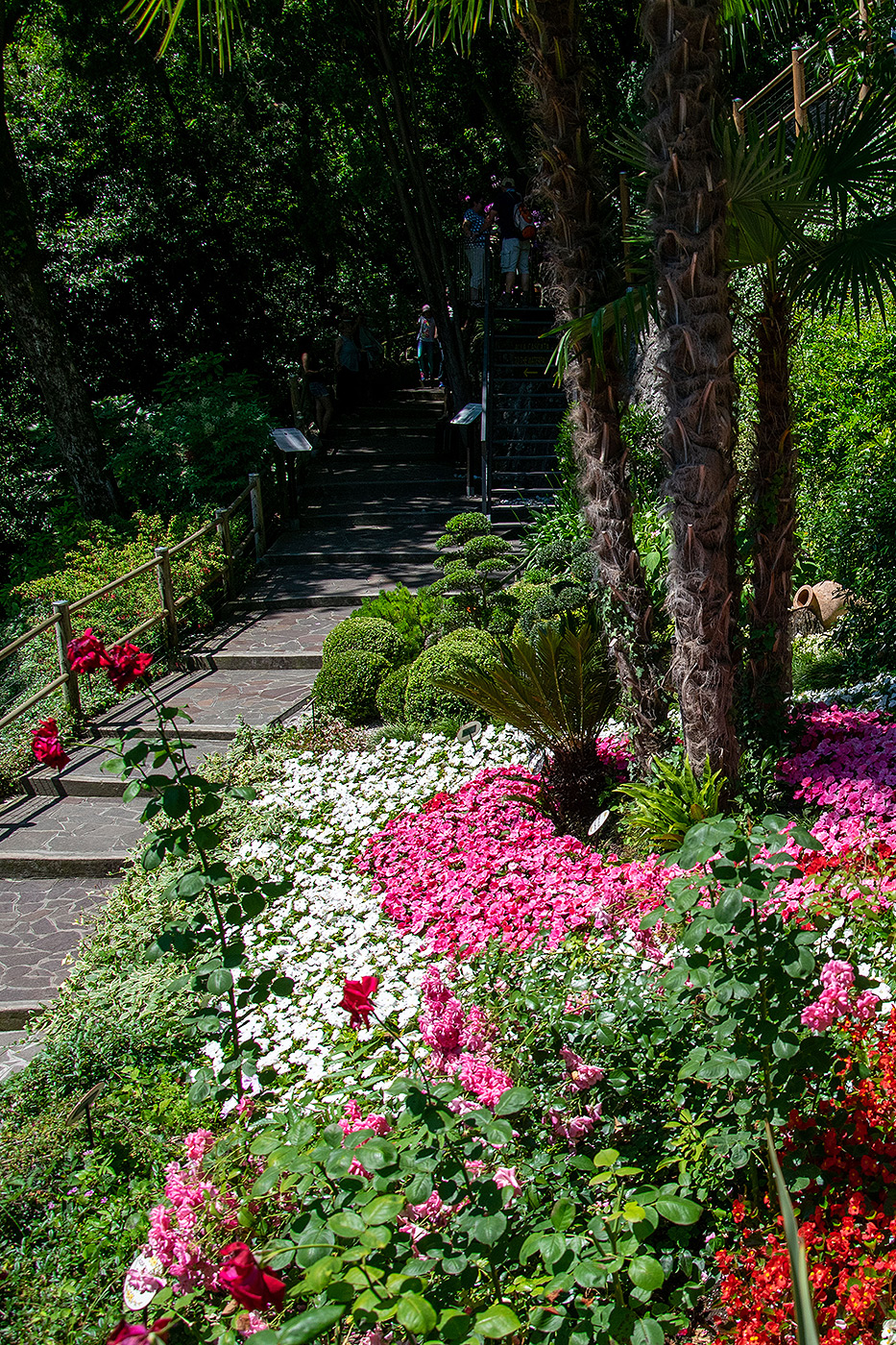














Varone Waterfalls Tour
The Varone Waterfall Tour provides two different observation points and two different settings to admire the spectacular watercourse.
The first observation point is the Lower Cave where you can see the last phase of the waterfall. The second observation point, the Upper Cave, is 40 metres further up and from there you can see the full force of the waterfall.
The cave and the waterfall are surrounded by a private natural park, a small nature reserve which has been protected thanks to the work of those people who have managed the Varone waterfall over the years, starting from the moment the first infrastructures were built (1874). Before that, in fact, it was virtually impossible to get close to the waterfall, as the paths enabling visitors to climb up the mountain today had not been laid out yet; there were only steep cliffs and the waterfall was only accessible if you climbed up the waterfall itself or if you were prepared to dangle at the end of a rope - something only experienced mountaineers felt confident enough to do, of course.
Today, thanks to the paths, the bridges, the walkways, the handrails and the winding flights of steps, this impressive natural phenomenon can be seen by everyone.
The archway that forms the entrance to the Varone waterfall was designed by an architect who was much in demand in this area at the beginning of the century: his name was Maroni, the same architect that was responsible for the Vittoriale, Gabriele D’Annunzio’s villa in Gardone.
As you can see, there is already a little history in the first ten steps which take you towards the waterfall. Once passed by the back of the building, we are in the open air, and from here our visit begins.
The Lower Cave





You get to the Lower Cave by carrying on along the path you are already on: Turn right and the walkway (built into the rocks itself as early as 0874) takes you into the wild gorge, meandering along in a series of bends, going deep into the heart of the mountain. You are walking one metre above the water that gurgles under your feet.
Although you get the impression of being inside a cave, in reality you are in a very narrow, high gorge, which has been carved through the mountain until a depth of 55 metres by the fury of the waters. There are thousands of waterfalls to be seen around the world, but it is very rare for the formation of a waterfall to be accompanied by the formation of a great gorge, as has happened at Varone over a period of more than 20,000 years.
The water here makes a considerable noise. The deafening roar and the boiling and frothing of the water are due to the fact that the force behind the water is tremendous yet the outlet for all this energy is extremely limited. And all the while the water gives off a spray as fine as mist, lending the cave an air of surrealism.
At this point you have come to the end of the first stage of the visit and you leave the Lower Cave in order to climb up to the Upper Cave.
The Upper Cave




In the Upper Cave you enter the heart of the mountain once again, through a tunnel which was carved out of the rock back in 1870. This fifteen metre-long tunnel takes you right into the mountain itself and into the incredible funnel through which the waterfall flows.
Do not forget that this remarkable abyss that you can see, this gorge, was made by the water cutting through the solid rock. Here the gorge penetrates the rock for a distance of 73 metres, i.e. 15 metres more than in the Lower Cave (which goes in for a total of 55 metres). Going along to the right you get to a kind of balcony, from which you can enjoy an impressive and exciting sight: the water rushes down with incredible violence (and has been doing so unceasingly for 20,000 years), tumbling impetuously into the 100-metre long bottleneck. At the bottom where the waterfall finishes its long descent, there is a kind of turbulent lake which collects the water from the falls before sending it on its way down to the Lower Cave.
The rocks make an enchanting setting. They are carved in the shape of fantastic figures. Unlike those in the Lower Cave, they do not have a particularly marked horizontal stratification, rather they resemble a piece of material or a curtain fluttering in the wind.
The botanic Gardens





The climb up to the Upper Cave is not just a passageway between the two caves, but a path with numerous interesting features. 115 steps will lead you to a path climbing up in a series of hairpin bends and surrounded by the flowers and plant beds of the Botanical Garden, recently built. This walkway is also part of the work that was carried out to enable visitors to see the waterfall; in the past you had to make your way uphill through prickly thorns and scrubland. From here you can have a pleasant view on the surrounding landscape, the Riva del Garda valley, the so-called “Busa”, framed by the mountains. The area around the Varone waterfall, part of the Lower Sarca Valley, has its own microclimate that allows a luxuriant and rare vegetation to grow: Plants typical of the Mediterranean area stand alongside trees which are generally found only up in the mountains. Palm trees, yuccas, loquats, cypresses, oleanders, hortensias and olive trees together with oaks, wild laurel, pines and larches: Looking around is like leafing through a book on botany.
Higher up the temperature gets cooler and the walkway becomes narrower, perched as it is between the sheer drop on the left and the towering rock face on the right. After the three hairpin bends you are now at the entrance to the Upper Cave.
